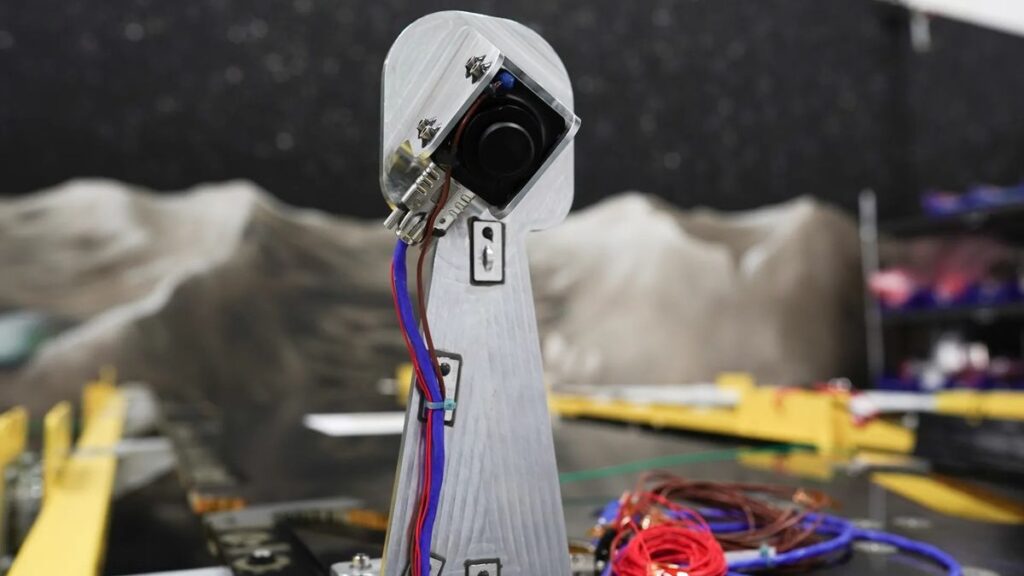A lunar lander set to launch next week will have a special set of four eyes to track how the spacecraft’s engine plume interacts with the lunar surface.
The Intuitive Machines’s IM-1 Nova-C moon lander is currently set to launch on a SpaceX Falcon 9 rocket from Florida’s Cape Canaveral Space Force Station on Valentine’s Day (Feb. 14) at 12:57 a.m. EST (0557 GMT).
The lander, named Odysseus, carries 12 payloads, half of which are commercial and the others from NASA. One of these is the Stereo Cameras for Lunar Plume-Surface Studies (SCALPSS), developed at NASA’s Langley Research Center in Hampton, Virginia, and placed around the base of the tall, hexagonal cylinder lander.
SCALPSS 1.0 will be active during the lander’s descent onto the moon and observe how the lunar surface is impacted and changed by Odysseus’s engines. The experiment utilizes stereo photogrammetry, where overlapping images from the cameras are used to create a 3D view of the lunar surface, allowing for detailed analysis of surface changes after the landing.
The findings will help scientists and engineers predict the effects of landings on the lunar surface — an important issue for NASA’s Artemis program which aims to return humans to the moon and establish a long term lunar presence. Concerns include potential erosion or damage to nearby equipment due to a lander’s plume.
“If we’re placing things — landers, habitats, etc. — near each other, we could be sand blasting what’s next to us, so that’s going to drive requirements on protecting those other assets on the surface, which could add mass, and that mass ripples through the architecture,” Michelle Munk, principal investigator for SCALPSS and acting chief architect for NASA’s Space Technology Mission Directorate at NASA Headquarters, said in a NASA statement. “It’s all part of an integrated engineering problem.”
It will take the SCALPSS team at least a couple of months to process the images, verify the data, and generate 3D digital elevation maps, according to NASA. But the hard work will help planning future missions and ensuring the safety of lunar landings.
The IM-1 Nova-C lander will be attempting to become the first-ever private spacecraft to successfully land on the lunar surface.
It follows the failed Israeli firm SpaceIL’s Beresheet and Japanese company ispace’s Hakuto-R lunar landing missions in 2019 and 2023, and the loss of Astrobotics’s Peregrine early this year. Peregrine suffered an ultimately mission-ending fuel leak shortly after separating from its Vulcan Centaur rocket upper stage.
Like Peregrine, Odysseus is part of NASA’s Commercial Lunar Payload Services program (CLPS). The initiative is part of NASA’s wider Artemis program.
Another CLPS mission — Firefly Aerospace’s Blue Ghost — is scheduled to carry SCALPSS 1.1 later this year. This upgraded version will feature two additional cameras.
Source: https://www.space.com/intuitive-machines-nova-c-moon-lander-tiny-nasa-cameras-scalpss



